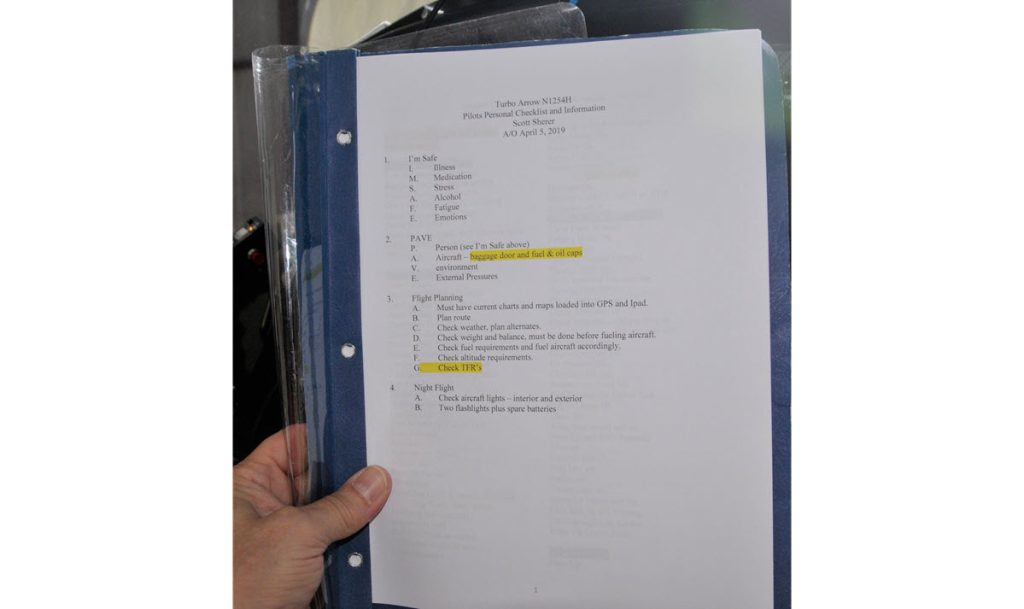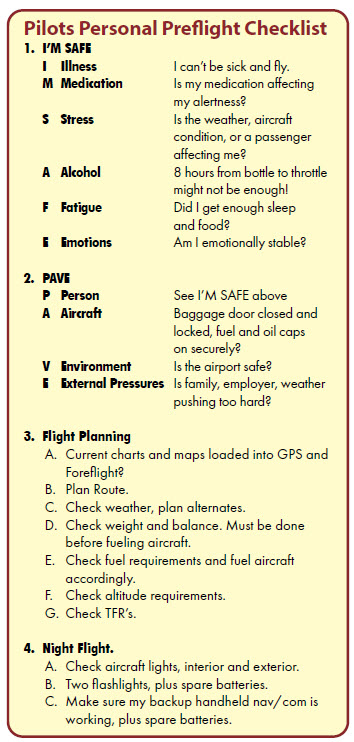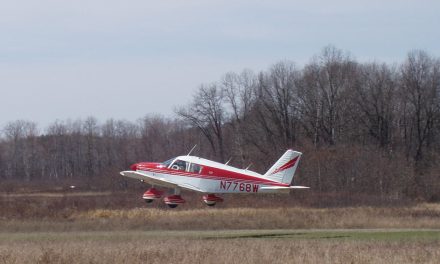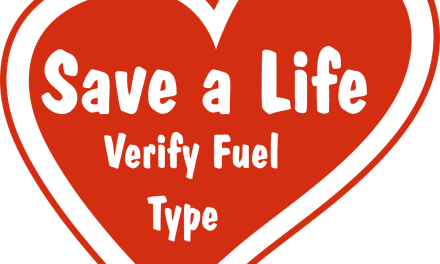Alertness and fatigue are important considerations when flying. Since I’m a long-time pilot, I’ve missed out on some of the research and knowledge that some of the younger pilots have acquired while going through flight training. As a result, I’m constantly reading everything there is on aviation and being safe. Back in 2017, I got my commercial license and my instructor, Paul Aydt, brought me up to speed on a couple of the more recent developments in safety, all having to do with alertness and fatigue.
Let’s start with our aircraft checklists. Many of you, especially the aircraft renters among you, use a standard checklist that comes with your aircraft. This is a good start, but it leaves a lot to be desired. Your checklist was created and put in your aircraft manual when your aircraft was built and that was very likely many decades ago. Like me, having missed many of the safety lessons of the past few decades, so has your manual. Let’s look at what is missing from your checklist and what you can do about it.
The goal is that your checklist should include every piece of aircraft information that you need while operating your aircraft. You don’t have time to pull out your POH and start researching an engine restart procedure when you’re on downwind and your engine just quit. You probably knew that, but does your checklist contain information on every piece of equipment in your airplane since it was manufactured? Does your checklist contain items about the pilot, you?
Let’s dwell on the latter for a moment. My checklist is five pages long and originated from my aircraft manufacturer. I have typed the manufacturer’s checklist into a Word document. Almost every month or two I find a better way to do something and I’ll make a change, reprint it, put it in a folder or laminate it and stick it back in the airplane. However, my aircraft preflight checklist starts on page two, not page one. As I mentioned in paragraph one, my instructor Paul explained seven years ago that I need to do a preflight check on the pilot. So how do you do that? I’m going to save you time and effort so you don’t have to invent this. Like me, you can update and reprint as needed.
If you run down the list on my page one, you’ll see that I spend a few minutes on me. I stop everything that I’m doing on the airplane and take a deep breath and relax. Am I feeling well? Have I had any medication that might impair my flying, like Benadryl in the allergy season? Am I stressed about something in my personal life or pressured to get somewhere in my plane that might cause me to make a mistake? Am I overtired and have I had enough sleep and food? Are my emotions in check?
All of these must be positive for me to fly. Even one that comes up with a “no” leaves me on the ground till I can resolve it. Only then can I go flying.
Wise Parting Words
In 2017 I achieved something I didn’t know existed and once I found out about it, I couldn’t believe that I actually qualified for it. I became an FAA Wright Brothers Master Pilot. While most of the award is about being old, the other part is having flown 50 years without an accident. Being absolutely unbendable on my dedication to checklists has helped me achieve this goal and page one of my checklist is a major contributor to that achievement.
Happy flying and use that checklist!






